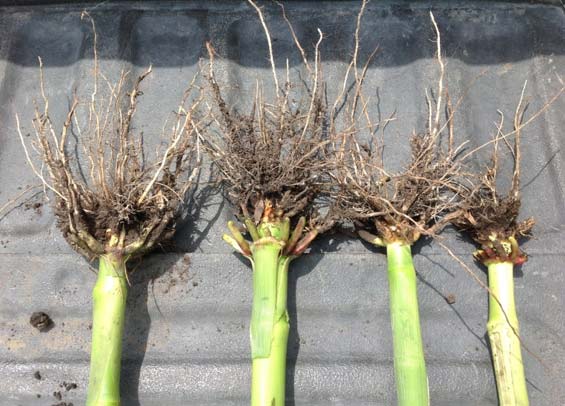4/12/2024
Field Performance of Vorceed® Enlist® Corn Rootworm Traits: 2020-2023

Agronomy Research Update
From Pioneer Research & Development and Agronomy Sciences - Written by Jim Bing, Program Leader, Insect Control Traits; Tim Nowatzki, Senior Research Scientist; Tim Mabry, Field Scientist; Jeff Klever, Research Investigator; and Mark Jeschke, Ph.D., Pioneer Agronomy Manager
Key Findings
- The corn rootworm traits in Qrome® corn and Vorceed® Enlist® corn both provided effective control of corn rootworm larval feeding.
- The Vorceed Enlist traits had significantly lower corn rootworm feeding damage compared to the Qrome traits.
- Both corn rootworm trait products provided a significant improvement in yield compared to the negative control under corn rootworm pressure.





Agrisure® is a registered trademark of, and used under license from, a Syngenta Group Company. Agrisure® technology incorporated into these seeds is commercialized under a license from Syngenta Crop Protection AG. Liberty®, LibertyLink® and the Water Droplet Design are registered trademarks of BASF. ®Roundup and Roundup Ready are registered trademarks of Bayer Group. Enlist One® and Enlist Duo® are not labeled for use in all 50 states. To find product labels, state registration status, and additional resources about the Enlist® weed control system and its availability, visit Enlist.com. Additional stewardship information on Enlist crops and to review seed product use guide details, visit traitstewardship.com.
The foregoing is provided for informational use only. Please contact your Pioneer sales professional for information and suggestions specific to your operation. 2020-2023 data are based on average of all comparisons made in 33 locations through Dec 1, 2023. Multi-year and multi-location is a better predictor of future performance. Do not use these or any other data from a limited number of trials as a significant factor in product selection. Product responses are variable and subject to a variety of environmental, disease, and pest pressures. Individual results may vary.






